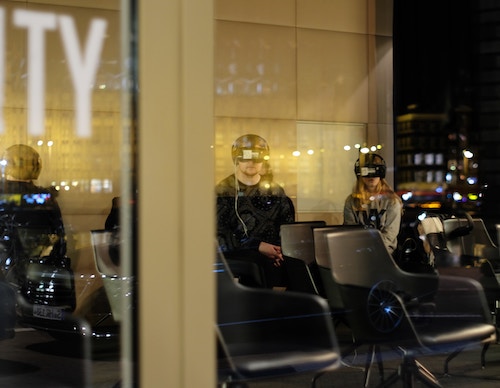A few years ago, escape rooms became all the rage. For good reason. It’s a great concept. Get a group of friends or colleagues together and complete what feels like a real-life mission. You find hidden clues and solve riddles to develop your escape plan. Having the whole thing on a time limit is a nice touch, too.
The concept has also been widely adopted on the corporate level. After all, what could be a better team-building exercise? You’re immersed into an entirely different world to follow Hollywood-esque storylines – except in a “real life” format.
So what happens when you throw virtual reality into the mix? Frankly, it transforms the experience – taking what is already innovative to an entirely new level.
Adding Virtual Reality to Escape Rooms
First, more specifics on the idea of escape rooms. Generally speaking, before an event commences you are provided a mission. You are then put into a room that has some kind of theme (depending on the storyline).
Once the event begins, you will be tasked with exploring the area for clues. You may, for example, find a box that requires a password to open. Or, say, a seemingly important lock that requires a key. Note: Depending on the room, you might be faced with some diversions – or rather, “bogus clues” that are unrelated to your escape.
The end goal? Free yourself.
Here are are a few examples of the types of escape room themes you may find:
- A deadly viral outbreak that you have to escape from.
- Investigate a crime scene and resolve the murder before becoming the next victim.
- Defuse a bomb in a room where you are trapped.
- Search for clues to locate a missing person.
- Rescue someone who is in a threatening situation.
- Among many, many others…
 It’s a brilliant concept, and it’s gaining serious traction. There are now thousands of escape rooms across the country. Just about every mid- to large-sized city has at least one location (they’re even now moving into smaller communities).
It’s a brilliant concept, and it’s gaining serious traction. There are now thousands of escape rooms across the country. Just about every mid- to large-sized city has at least one location (they’re even now moving into smaller communities).
It’s an exciting team building exercise that requires a lot of collaboration. You likely won’t connect all the dots unless you’re communicating with each other throughout the mission.
So… what about adding virtual reality to the mix? How will it transform the whole experience?
Well, it’s the next big evolution in real-world adventure gaming. It’s using technology to make the experience more immersive.
How Does a VR Escape Room Work?
When virtual reality is incorporated in the escape room environment, the premise is the same. There’s a collaborative effort to find clues, solve puzzles, and escape. However, with the VR component there are no physical objects.
There’s still a room, but the only objects in the rooms are typically just chairs. You take a seat, put on a headset, and enter the “room” – virtually. Instead of math puzzles, mysterious hieroglyphics, and ancient lock boxes, you are thrown into a make-believe world where anything is possible.
Literally, anything is possible. The opportunities are endless. The environment is anything the game writers come up with and anything the developers are capable of creating. And depending on the aptitude of the escape room developers, the experience can feel like a real reality.
If you’ve used virtual reality, you kind of know how that works. Trying VR for the first time is an interesting experience. You might not think much of it… “Okay, I’m going to put on this headset and play a little game.”
Not exactly. Put on a headset, stick in some earbuds, and spend 20 minutes in a VR environment. As soon as you remove the headset, you get this feeling. It’s hard to describe. You truly feel like you were in a different world. It’s an odd, but also thrilling, experience.
The anti-tech world might say, “Adding virtual reality to the escape room format, defeats the whole purpose. A big benefit of escape rooms is that it encourages social interaction, not isolation!”
Not necessarily the case. Teamwork and cooperation is just as present. And with realistic avatars, you can see your teammates just like you do in the real world.
So… what’s the point? No boundaries.
Think about it. It would be very difficult to simulate a realistic space environment in a physical room. Or an experience where you’re in an airplane that is running out of fuel.
Penny Jones, owner of Riddles Escape Room in Myrtle Beach, North Carolina, acknowledges that adding virtual reality to her company’s service offering has given her an edge.
“The virtual reality escape room has offered us a competitive edge in this market. Players are able to enter an entirely new dimension and experience, all from the comfort of their chairs,” said Jones.
From a Business Standpoint
Let’s look at how virtual reality can transform both the business model and the consumer experience.
First, from a business standpoint…
The effect on an escape room’s business cannot be discounted, because it’s a cause and effect for the consumer. Considering it’s a booming business, many of these enterprises are already earning a boatload of cash. Take the company Escape Hunt, a franchise company that actually went public a little while back.
 Transitioning to a VR format would open the door to more opportunities and significantly more revenue. Thanks to the nature of virtual reality technology, the cost to set up a room is basically the cost of purchasing a few chairs, some mobile headsets, and the cost to buy digital content.
Transitioning to a VR format would open the door to more opportunities and significantly more revenue. Thanks to the nature of virtual reality technology, the cost to set up a room is basically the cost of purchasing a few chairs, some mobile headsets, and the cost to buy digital content.
The infrastructure of creating a physical escape room is expensive.
Moreover, theme flexibility is huge.
This would provide greater diversity to consumers – leading to greater customer retention. Over time, businesses can build up a large portfolio of content. In essence, when a customer schedules an event, they might have 100 different adventures to choose from.
In the scheme of things, the overhead expense of running multiple physical escape rooms is considerably higher.
From a Consumer Standpoint
The experience from a VR escape room vs. a physical escape room is much different. The VR format is much more immersive.
Let’s tease out a scenario:
You and your friends are in the International Space Station. You’re floating around and experiencing gorgeous views of our big blue planet. All of a sudden, the alarm goes off. You have to identify the cause of the alarm. One of your teammates discovers the problem: There’s a leak!
You’re working together to find a solution, only to find out that the only way to patch the leak is to “step outside.” You decide who is up for the task. You work together to suit up the volunteers. As the heroes are off on their space jumps, the rest of the team has to monitor the computers and guide the jumpers.
Phew, you patched the leak. You’ve prevented controversy from the earthling media (and possibly even decreased NASA funding). Now all you have to do is escape down to Earth. You land safely. Mission accomplished.
Virtual reality makes this real-world impossibility a visual reality.
Just for fun, let’s think up another one. Maybe something educational that would make for a great biology class field trip:
Everyone is plopped into an immersive trip throughout the inside of a human body. The goal is to bring the body to life by identifying the organs, fixing a few bones, and get the blood flowing.
But there’s a challenge. The heart is in the head, the brain is in the abdomen, and there are bones disjointed and scattered throughout the body. The classmates must work together to put the pieces back together. They have 45 minutes to do it.
Sound better than dissecting a frog? It would be a more memorable experience, arguably a more effective way to educate people on how the human body functions.
Moral of the story… the possibilities are endless.
As software writers get more creative, and as virtual reality technology continues to progress, our lives will be transformed in all possible ways – everything from business to education and recreation.
